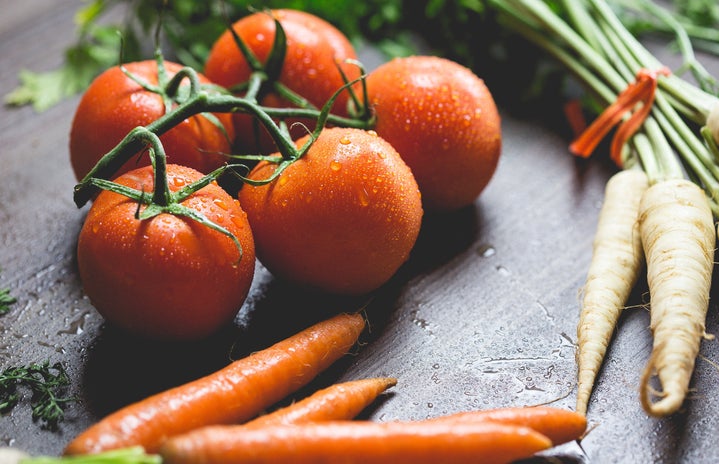Weight Watchers, the Paleo Diet and the South Beach Diet are familiar diets that promote weight loss. But what about a diet that helps your heart?
You may have heard of the DASH diet, which gained popularity after being named the best overall diet of 2014 by U.S. News & World Report. Ifyou’re searching for a way to get healthy and maybe drop a few pounds along the way, keep reading, because the DASH diet might be for you!
What is it?
The DASH (which stands for Dietary Approaches to Stop Hypertension) diet was designed by researchers to help combat high blood pressure. The diet focuses on reducing sodium consumption and increasing consumption of foods that are rich in nutrients proven to lower blood pressure, such as calcium, magnesium and potassium.
Reducing sodium consumption may be beneficial for many Americans, according to Brooke Schantz, a registered dietitian.
“Most Americans consume about 3,300 milligrams of sodium per day, while the upper limit of current recommendations by the federal government’s National High Blood Pressure Education Program (NHBPEP) and the amount used to figure food labels’ nutrition facts daily value is 2,400 milligrams per day,” Schantz says.
Although the diet was not originally designed for weight loss, experts at U.S. News & World Report rated DASH highly among the categories of safety, nutrition and weight loss. DASH is endorsed by the U.S. government’s 2010 Dietary Guidelines for Americans, which compiles research to gather up-to-date nutrition information so dieters know they are following a safe and nutritious diet plan.
Unlike many fad diets that promote rapid weight loss, the DASH diet is a lifelong approach to eating healthy.
What does the DASH diet entail?
“The DASH diet breaks down into a really well-rounded diet that recommends an intake low in saturated fat, cholesterol and total fat, and that emphasizes fruits, vegetables and low-fat dairy foods,” Schantz says. “This diet is very healthy as long as those following it watch their portion sizes. Consuming too much of even healthy foods could lead to weight gain and related comorbidities.”
According to the Mayo Clinic, here’s how much of each food group you should eat on this diet:
- 6-8 servings of grains (one serving = one slice of whole wheat bread)
- 4-5 servings of vegetables (one serving = 1/2 cup of cut-up carrots)
- 4-5 servings of fruit a day (one serving = one apple or banana)
- 2-3 servings of low-fat or fat-free dairy (one serving = one cup of skim milk)
- 6 or fewer servings a day of meat or fish (one serving = one ounce of cooked, skinless chicken)
- 4-5 servings a week of nuts, legumes and seeds (one serving = 1/3 cup nuts)
- 2-3 servings a day of fats and oils (one serving = one teaspoon soft margarine)
- 5 or fewer sweets a week
As you can tell from the list, the DASH diet doesn’t restrict many foods. Basically, the goal of the diet is eating healthy, whole foods in the right portions. By cutting down on high-sodium, high-fat and high-cholesterol foods, the diet can aid in lowering blood pressure and a healthy weight loss.
[pagebreak]
Who should follow the DASH diet?
The DASH diet is specifically designed for people who are in danger of hypertension (high blood pressure), but has also been proven to lead to improvement of overall health. Because the diet is well rounded and doesn’t cut out any major nutrients, the DASH diet is safe for just about anyone to try.
“Decreasing sodium intake has also been shown to be effective for both hypertensive and non-hypertensive individuals,” Schantz says.
The DASH diet can also be used as a healthy tool to lose weight. As long as followers of the diet watch portions and make sure to focus on healthy foods, the diet can be conducive to weight loss, Schantz says.
“The DASH diet was not designed for weight loss, however, it is rich in lower-calorie foods like vegetables and fruits,” she says. “If my patients want to lose weight while following the DASH diet, I recommend that they also focus on reducing their portion sizes, increasing their vegetable and fruit intake, increasing their intake of low-fat dairy products, limiting foods with lots of added sugar, drinking more water and limiting meat intake to six ounces of day (two servings).”
So if you’re concerned about high blood pressure or improving your overall health, or you simply want to shed a few pounds in a healthy way, the DASH diet might be a good choice for you!
Final verdict: should you try it?
If you’re still not sure if the DASH diet is the right fit for you, try answering the following questions:
- Do you have or are you in danger of having high blood pressure?
- Are you looking to lose weight in a healthy way instead of using a “quick fix”?
- Are you willing to devote time into planning out your meals?
- Are you willing to give up a lot of processed foods and salty snacks?
- Do you want to eat an overall healthier, more well-rounded diet?
If you answered yes to most of these questions, it might be time to consider the DASH diet! If you think this diet might be a good fit for you, talk to your doctor about trying it out.

